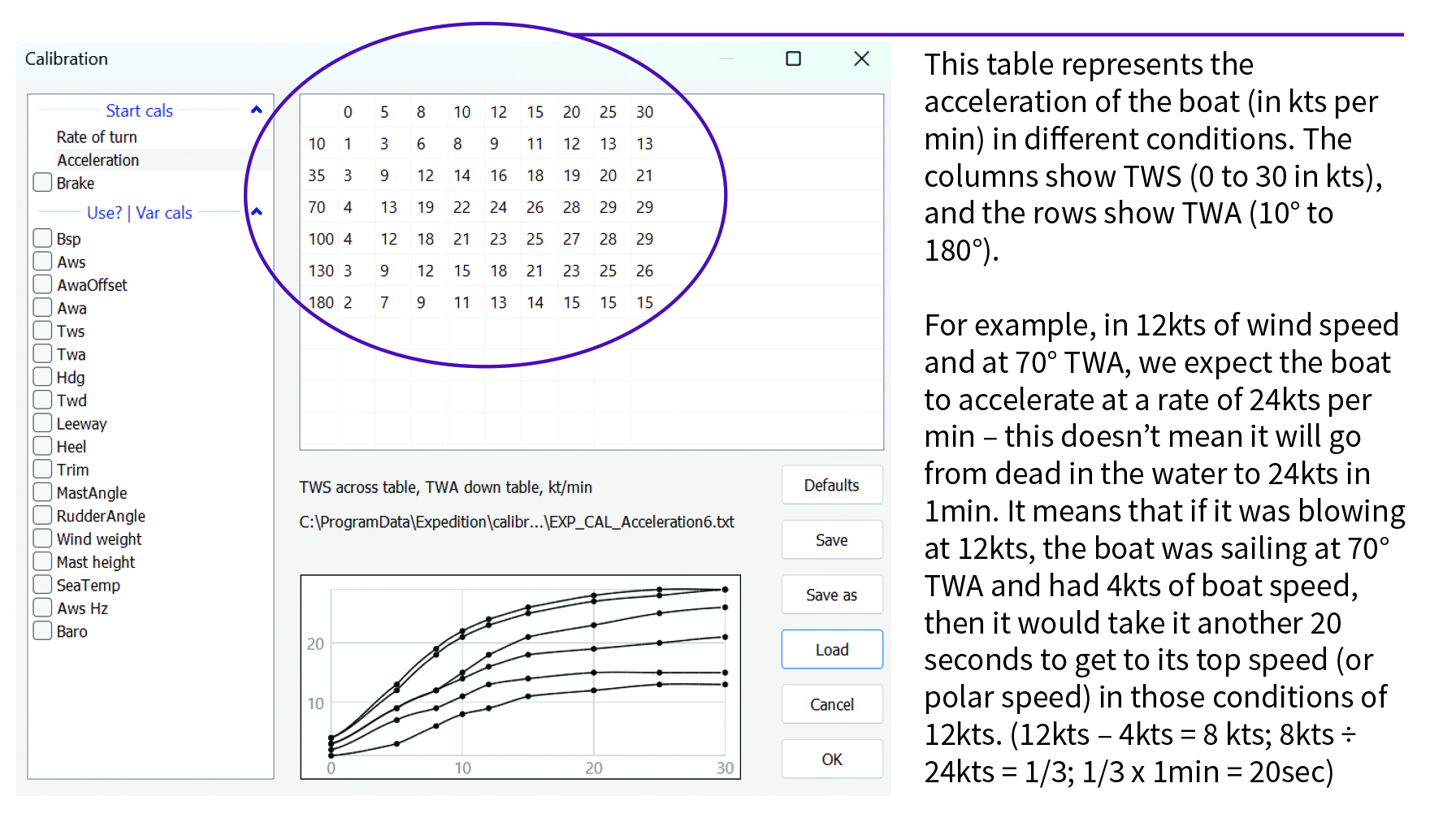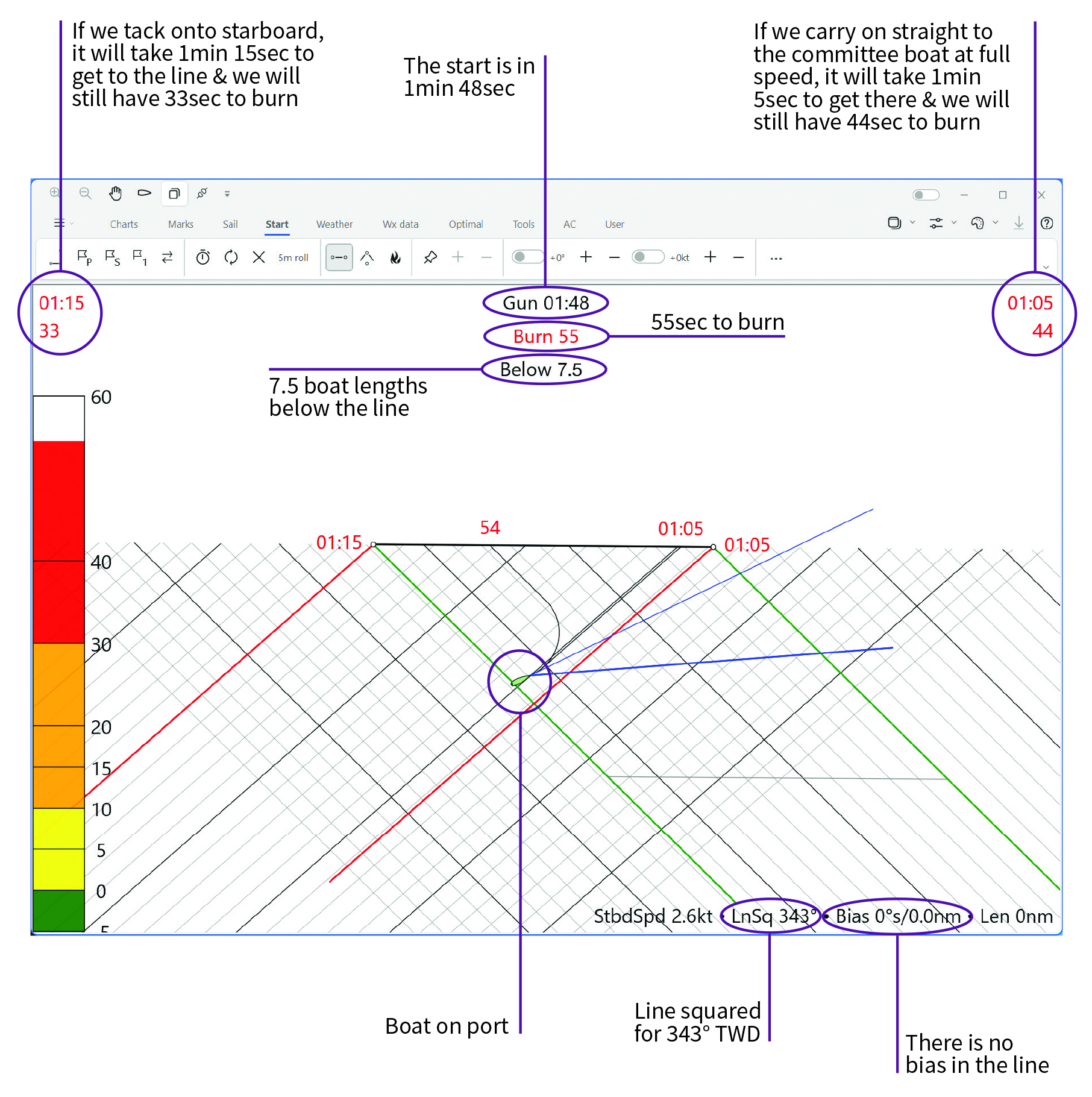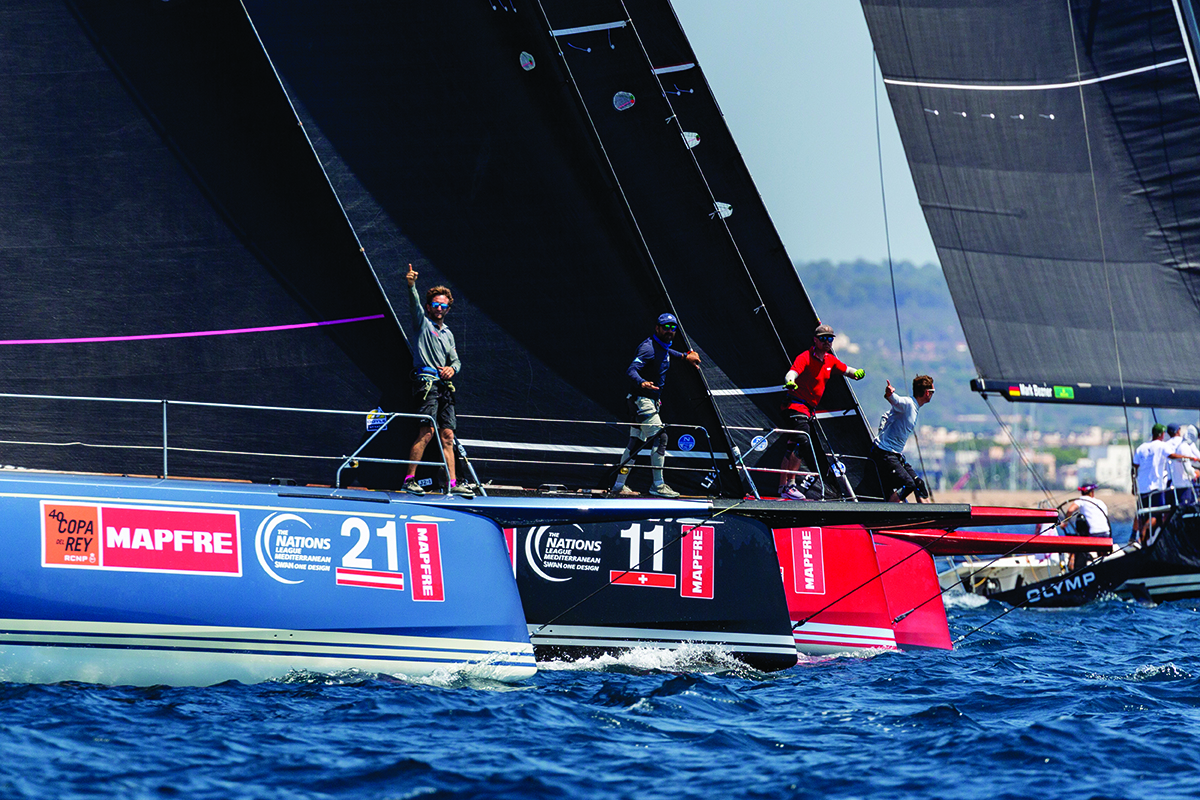Start Procedure from Mastering Data To Win
Book Extract
We have already discussed all the problems and issues of wind shifts and bias on the start line, and encouraged navigators to look ahead to the first leg – but what else is the navigator asked to do during the start?
The ‘magical number’ that the navigator is giving to the team (and especially to the tactician) is the time to burn. This number tells the crew if the boat is early or late to the start, and by how much. How is this calculated by the navigation software and what should the navigator worry about to make it more accurate and reliable?
The inputs that go into the calculation are:
- Wind speed
- Boat speed
- Position of the boat
- Position of the start line
- Starting polars
- Acceleration table
- Rate of turn table
Basically, to understand how fast a boat can go from the current position to having the bow on the start line, the system needs to know all these things. And a single error in one of them will lead to a misleading burn time number.
We have seen how to make most of those inputs as accurate as possible. What we have not seen before is the acceleration table and the rate of turn table.
These two tables are designed to tell the software how fast a boat is accelerating in certain conditions (in particular, with a specific wind speed and a specific true wind angle), and how quickly the boat can turn (in degrees per second) in the same conditions.
If you are sailing parallel to the line with flapping sails, the software is doing the following maths:
- Calculating how long it takes to accelerate the boat from this speed to the target speed, while turning the boat from this true wind angle to the optimum VMG angle (assuming an upwind or downwind start), otherwise to the true wind angle to the first mark
- Calculating how long it takes for the boat to cover the remaining distance to the line (once the first condition has been achieved), at the optimum VMG angle and target starting polar speed
Sum up the numbers, and you will have how much time the software thinks it will take you to reach the start line. Subtract this time from the time remaining to the start, and you will get the burn time, or time to burn.
If we want to see the formula, we can represent it like this:
Burn Time = (Countdown to start) – (Time to reach the line)
Of course, the time to reach the line changes if you consider doing a gybe or a tack, etc.


A screenshot of the pre-start view on Expedition showing the geometry of the line and timings for different approaches
So, it should be clear by now that to get the right time to burn requires a lot of accurate calculation and a lot of work making the inputs to that calculation accurate. It is very important that the navigator understands this and does a bit of extra work in his mind taking into consideration what he sees around him, for example:
The wind is very dirty because you are in a busy spot on the start, so think that the boat will accelerate slower than what the computer is calculating
The sea state is a bit more choppy than the usual conditions for that wind speed, so think that the boat will struggle to get up to speed
There are some puffs coming, so be careful because the boat will accelerate faster than expected and you might find yourself on the line early
Overall, all of these considerations are standard for a tactician. What we want to highlight is that the navigator can’t look at the numbers and rely on them a hundred percent. Part of the role is to interpret those numbers and understand when you can read them as they are, and when you have to tweak them in your head. Especially at the start.
